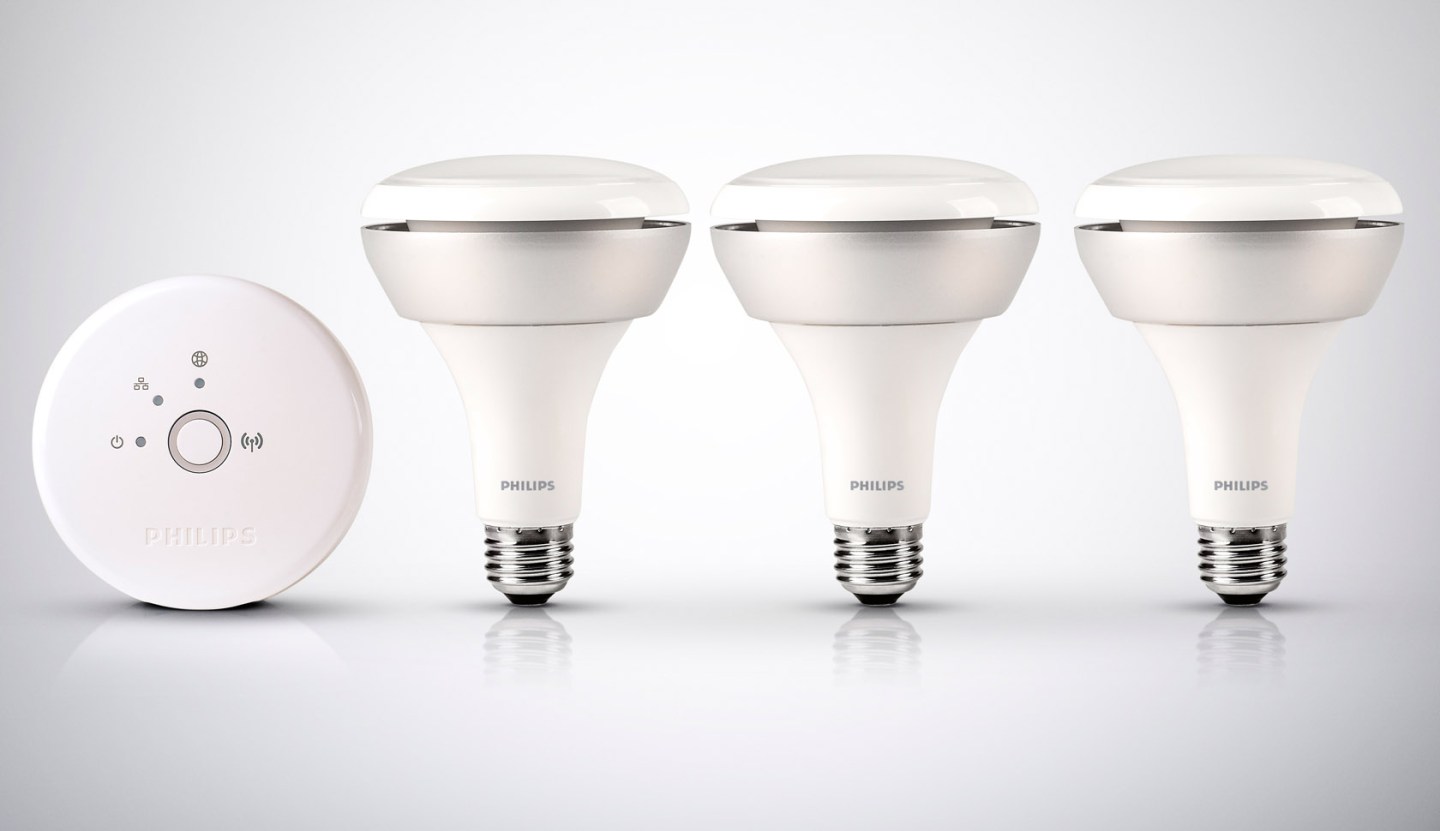You could feel the excitement at the 2015 Lightfair, the annual lighting-industry trade show, held this year in New York City. General Electric (GE), one of the world’s largest manufacturers of lights, announced plans to introduce an Internet-connected bulb that would work with Apple’s (AAPL) upcoming home-automation system, HomeKit. The bulb, which doesn’t yet exist, is designed to mimic the sun’s patterns and can be controlled with a smartphone.
It was a high-profile affair—two corporate giants in a sweet embrace plus a dash of whiz-bang technology. But look past the glitz and you’ll discover a hard truth: GE is late to the smart-light party. Almost all its competitors offer a consumer bulb with similar features. It’s a sign that the leaders of the lighting industry—GE, Philips (PHG), Osram—are under siege by a rash of startups that are chiseling away at their dominance.
Lighting, like everything else, has gone digital. Instead of creating light with wires and gas inside a hot enclosure, we now use semiconductors known as light-emitting diodes, or LEDs. Diminutive and durable, they’re a far cry from Edison’s incandescents—and they’re enabling a lot of competition. Soraa, a lighting company founded in 2008 by Nobel Prize in physics winner Shuji Nakamura, sells commercial lights to California Pizza Kitchen and Starwood Hotels (HOT). Ketra, a six-year-old startup, provides lighting for the Art Institute of Chicago and Tiffany & Co (TIF).
The rapid shift has the incumbents scrambling. In March, Philips announced plans to sell its LED component-making division. Siemens spun out Osram through an initial public offering. Rumors suggest that GE’s lighting division could be for sale. (The company denies it.) “The rapid transition to LEDs has caught the major manufacturers a bit unawares,” says Will Rhodes, a market researcher at IHS Technology. “Their traditional business is falling faster than their LED business is taking off.”
Add to this the conundrum of the long life cycles of LED bulbs—22 years on average—and incumbents also face a business-model challenge. For now they’ll benefit from customers’ upgrading to pricey LEDs, but lengthy replacement cycles will force them to sell services to keep revenue flowing. Call it a bright spot in an otherwise dim business.
This story is from the June 1, 2015 issue of Fortune magazine.
